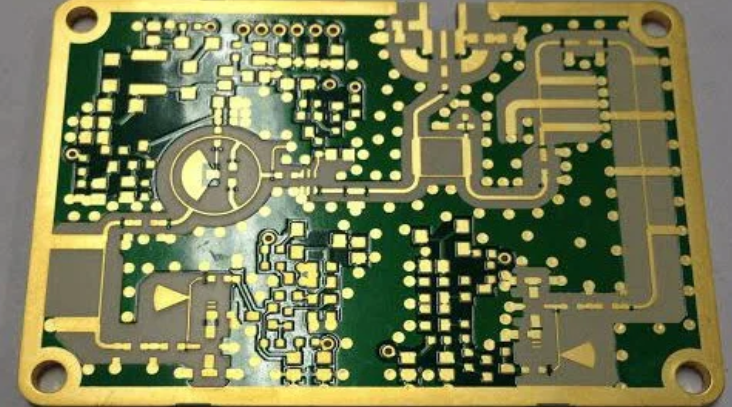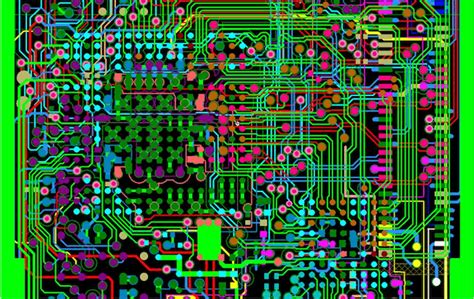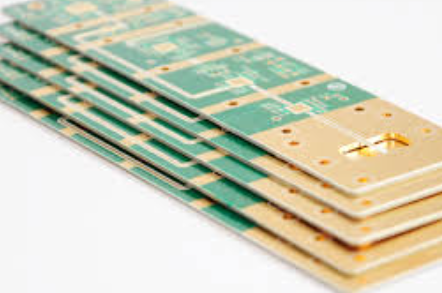Analyzing the Impact of PCB Routing on Analog Signal Transmission
Abstract
Printed Circuit Board (PCB) routing plays a critical role in maintaining signal integrity for analog circuits. This paper examines how various PCB routing factors affect analog signal transmission quality, including trace geometry, impedance control, crosstalk, grounding strategies, and material selection. We present analytical methods to evaluate these effects and provide design guidelines to minimize signal degradation in analog circuits.
1. Introduction
Analog signal transmission in PCBs requires careful consideration of routing techniques to preserve signal integrity. Unlike digital signals that can tolerate some distortion, analog signals are particularly sensitive to noise, interference, and transmission line effects. The PCB layout engineer must understand how trace routing affects key parameters such as signal-to-noise ratio (SNR), frequency response, and distortion characteristics.
This analysis focuses on the fundamental aspects of PCB routing that impact analog performance and provides methodologies to quantify these effects during the design phase.

2. Key PCB Routing Factors Affecting Analog Signals
2.1 Trace Geometry and Impedance Control
The physical dimensions of PCB traces significantly influence analog signal transmission:
- Trace Width: Affects both DC resistance and AC impedance. Narrower traces have higher resistance, leading to voltage drops and thermal noise. The DC resistance can be calculated as:
R = ρ * L / (W * T)where ρ is copper resistivity, L is trace length, W is width, and T is thickness.
- Trace Thickness: Typically specified in ounces of copper per square foot (1 oz/ft² ≈ 35 μm). Thicker traces reduce resistive losses but may increase parasitic capacitance.
- Impedance Matching: Critical for high-frequency analog signals to prevent reflections. Microstrip and stripline configurations require precise control of trace geometry relative to reference planes.
The characteristic impedance (Z₀) of a surface microstrip trace can be approximated by:
Z₀ ≈ (87/√(ε_r + 1.41)) * ln(5.98H/(0.8W + T))where ε_r is the substrate dielectric constant, H is the height above the ground plane, W is trace width, and T is trace thickness.
2.2 Transmission Line Effects
At frequencies where the trace length approaches a significant fraction of the signal wavelength (typically > 1/10λ), transmission line theory becomes essential:
- Propagation Delay: Approximately 85 ps/cm (FR4) for surface traces, affecting phase relationships in analog systems.
- Signal Reflections: Occur at impedance discontinuities, causing standing waves and frequency response irregularities.
The reflection coefficient (Γ) at an impedance discontinuity is:
Γ = (Z_L - Z₀)/(Z_L + Z₀)where Z_L is the load impedance and Z₀ is the line characteristic impedance.
2.3 Crosstalk and Interference
Adjacent traces can couple both capacitively and inductively:
- Capacitive Coupling: Proportional to the overlapping area and inversely proportional to separation distance.
- Inductive Coupling: Depends on the loop area formed by current paths.
The crosstalk voltage V_XT can be estimated as:
V_XT ≈ V_aggr * (C_m/C_total + L_m/L_total)where V_aggr is the aggressor voltage, C_m and L_m are mutual capacitance and inductance, and C_total and L_total are total trace capacitance and inductance.
2.4 Grounding Strategies
Ground routing profoundly affects analog signal quality:
- Ground Loops: Create differential noise voltages that corrupt analog signals.
- Ground Impedance: Even small resistances in ground paths can develop significant noise voltages with dynamic currents.
- Star Grounding: Effective for low-frequency analog circuits to prevent common-impedance coupling.
- Ground Planes: Provide low-impedance return paths for high-frequency signals but require careful management of split planes in mixed-signal designs.
2.5 Material Considerations
PCB substrate properties influence analog performance:
- Dielectric Constant (Dk): Affects propagation velocity and impedance. FR4 typically has ε_r ≈ 4.2-4.8 with ±10% variation.
- Loss Tangent (Df): Determines dielectric losses at high frequencies. FR4 has tanδ ≈ 0.02, while high-frequency materials may be < 0.001.
- Copper Roughness: Impacts high-frequency losses due to skin effect.

3. Analytical Methods for Evaluating Routing Effects
3.1 Frequency Domain Analysis
Using scattering parameters (S-parameters) to characterize transmission line performance:
- S21 measures insertion loss (signal attenuation)
- S11 measures return loss (reflections)
These can be simulated with electromagnetic field solvers or measured with a vector network analyzer (VNA).
3.2 Time Domain Reflectometry (TDR)
TDR measurements reveal:
- Impedance variations along the trace length
- Location and magnitude of discontinuities
- Proper termination effectiveness
3.3 Noise Coupling Analysis
Evaluate crosstalk through:
- Near-end crosstalk (NEXT)
- Far-end crosstalk (FEXT)
- Common-mode conversion
3.4 Thermal Analysis
Calculate temperature rise in traces carrying significant current:
ΔT ≈ I² * R * θ_JAwhere I is current, R is trace resistance, and θ_JA is thermal resistance.
4. Design Guidelines for Analog PCB Routing
- Impedance Control:
- Maintain consistent trace geometry for controlled impedance
- Use appropriate reference planes
- Terminate properly at both ends when necessary
- Minimizing Noise Coupling:
- Apply the 3W rule (trace spacing ≥ 3× width) for adjacent traces
- Route sensitive analog traces perpendicular to noisy digital traces
- Use guard traces or ground shields for critical signals
- Grounding Best Practices:
- Implement single-point grounding for low-frequency analog
- Use continuous ground planes for high-frequency analog
- Separate analog and digital ground domains with careful attention to return paths
- Signal Integrity Preservation:
- Minimize trace lengths for sensitive signals
- Avoid sharp bends (use 45° or curved traces)
- Route differential pairs with tight coupling and symmetry
- Power Distribution:
- Use adequate decoupling capacitors
- Implement star distribution for sensitive analog supplies
- Consider separate power planes for different analog subsystems
5. Case Study: High-Resolution ADC Interface Routing
A 24-bit ADC application demonstrates critical routing considerations:
- Trace Length Matching: Clock and data signals must be length-matched to within < 100 mils (2.54 mm) to prevent timing skew
- Ground Separation: The analog ground plane under the ADC must connect to the digital ground at a single point near the device
- Reference Voltage Routing: Requires wide traces with guarding to maintain stability
- Clock Routing: Should be shielded and kept away from data lines to prevent coupling
Measurements showed that improper routing could degrade SNR by up to 15 dB in this application.

6. Conclusion
PCB routing significantly impacts analog signal transmission through multiple physical mechanisms. By understanding and analyzing these effects during the design phase, engineers can implement routing strategies that preserve analog signal integrity. Key factors include controlled impedance, careful grounding, minimization of interference, and appropriate material selection. Modern analysis tools and measurement techniques enable quantitative evaluation of routing effects, allowing for optimization before board fabrication.
As analog systems continue to demand higher performance in increasingly dense PCB environments, meticulous attention to routing practices remains essential for achieving design objectives. The analytical methods presented provide a framework for evaluating and improving analog signal transmission quality through proper PCB layout techniques.







